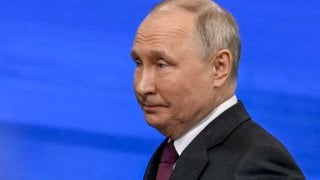What The Latest Russia Sanctions Mean For Oil Markets
It remains to be seen how the incoming Trump administration will handle enforcement.
The outgoing Biden administration fired a parting salvo of enhanced sanctions at Russia last Friday, January 10. In so doing, it surprised the oil market and shifted the prevailing bearish market zeitgeist. Brent crude climbed sharply in both the January 10 and January 13 trading sessions, settling the latter day at $81.01, up over 5 percent and at its highest level since last August. It remains to be seen whether this will be a lasting trend, however, and several factors could limit any upside to oil prices.
The new sanctions have several targets across the Russian energy sector, including Gazprom Neft and Surgutneftegas, but most importantly, the “ghost fleet” of aging tankers which have been facilitating Russia’s oil exports and allowing much of the volume to evade the price cap of $60 per barrel from U.S. and EU sanctions. The move also limited some of the exemptions that have allowed banks to continue clearing transactions for Russian energy exports.
The U.S. and allied sanctions framework, which has been in place since Russia invaded Ukraine in February 2022, was never intended to completely cut off the country’s oil exports. This would have been too much volume loss for the market to absorb without an economically damaging price spike. The intent was to reroute trade and cap prices in a manner that would reduce Russia’s revenues without that sort of blowback. That worked, though the effective price discount imposed on Russian exports has narrowed over the last three years.
Concerns about market overtightening have ebbed since 2022, however, as U.S. and other non-OPEC oil production has grown and global demand growth has not met consensus expectations. This has forced OPEC+ to make deeper production cuts and keep them in place much longer than had originally been intended, building up a very large cushion of spare production capacity. This has emboldened U.S. officials to target the Russian oil industry in ways calculated to curtail export volumes, targeting 183 oil tankers by name and threatening to sanction any commercial entity that facilitates their operations, including port operators.
The sanctioned vessels are estimated by Goldman Sachs to have been moving around 1.7 million barrels per day of Russian crude oil, about 25 percent of total exports and 42 percent of seaborne exports, which could come off the market if alternative tankers cannot be found. This quickly led to announcements by port operators in both China and India, the two main markets for Russian oil exports, that the sanctioned vessels would not be allowed to unload there. It also set off a surge in daily rates for non-sanctioned tankers, given the relative inelasticity of the tanker market. Refineries also were scrambling to secure other supplies, largely by placing orders for Middle Eastern volumes, but also including oil from Africa and the Americas.
There already had been a degree of concern in the market about the incoming Trump administration tightening enforcement of sanctions against Iran in a manner that could reverse the rise in their export volume to nearly 1.7 million bpd—overwhelmingly to China—seen in the last two years. But this was offset by the desire of OPEC+ to roll back production cuts, which would easily offset any losses. Adding nearly another million barrels per day of Russian exports to that, however, would reverse much of the oversupply narrative that has dominated oil market discourse in 2024 amid sliding prices. The surprise move on sanctions by the United States pulled the backwardation in the market—the premium for front-month barrels over futures on year out—over $5 per barrel.
It remains to be seen how the incoming Trump administration will handle enforcement, a fact reflected in a modest pullback in prices during the January 14 trading session. Experience in recent years suggests that the oil market will usually find a way to keep volumes moving, just perhaps to different destinations at discounted prices. But if enforcement tightens up both Russian and Iranian volumes in 2025, that would be welcome news for other OPEC+ producers, who might finally find a way to increase their exports without causing a major drop in prices.
Greg Priddy is a Senior Fellow at the Center for the National Interest and does consulting work related to political risk for the energy sector and financial clients. Previously, he was director of global oil at Eurasia Group and worked at the U.S. Department of Energy.
Image: Miss.Cabul / Shutterstock.com.

